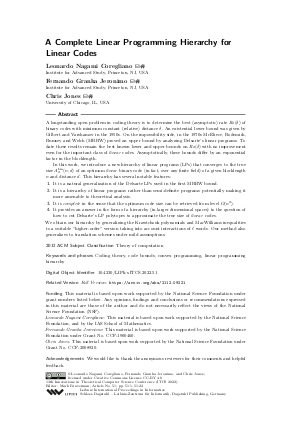LIPIcs.ITCS.2022.51.pdf
- Filesize: 0.78 MB
- 22 pages

 Creative Commons Attribution 4.0 International license
Creative Commons Attribution 4.0 International license

















Feedback for Dagstuhl Publishing